#software delivery
Explore tagged Tumblr posts
Text
Smarter DevOps for Today’s Large Enterprises

As enterprises grow, software delivery becomes more complex, with more teams, codebases, and infrastructure to manage. Teleglobal’s enterprise-grade DevOps solutions are built to simplify this complexity, enabling faster releases, better automation, and secure collaboration across departments.
Key DevOps enablers for enterprise success:
CI/CD Automation – Speed up releases while maintaining quality
Microservices Architecture – Make your systems easier to build, scale, and maintain
DevSecOps Integration – Build security into every step of your delivery pipeline
Infrastructure as Code (IaC) – Standardize and automate infrastructure at scale
Team Collaboration – Align Dev, Ops, and QA for faster problem-solving
Why It Matters: With the right DevOps strategy, enterprises can improve agility, reduce errors, and deliver software that scales with the business. Read more to explore how Teleglobal supports DevOps at scale.
1 note
·
View note
Text
https://websartech.com/devops
0 notes
Text
Software Delivery: Best Practices in Release Management

Launching updates and new features requires more than technical readiness. It calls for alignment across teams, proper scheduling, tested environments, and clear communication. The release management process brings structure to this work, making delivery more predictable and consistent.
When done well, it supports faster development cycles, reduces deployment errors, and improves team coordination. Let’s explore what practices contribute to a reliable and efficient release approach.
Build the Foundation: Define the Release Process
Without a defined path, software delivery can quickly become reactive. Establishing a clear framework helps every team understand their responsibilities before, during, and after a release.
To set up your release process:
Classify release types, such as major releases, minor updates, and hotfixes.
Establish checkpoints, including code freeze, QA approvals, and sign-offs.
Set up deployment methods that align with the size and complexity of each release.
Document rollback procedures and assign ownership for recovery actions.
Consistency makes every release more manageable. Even small updates benefit from structured coordination.
Choose Tools That Align with Your Workflow

The right tools can support every step of your sw release management. For teams using Jira, Golive by Apwide adds clarity and coordination to software delivery cycles.
Golive features include:
Environment booking and planning directly in Jira.
Real-time release calendars that sync across teams.
Visibility into who is deploying what, and when.
Status dashboards that integrate release data with existing workflows.
When tools are visible and shared, communication becomes part of the process. Golive helps ensure no team is left wondering about the state of the release.
Other tools you might consider include:
CI/CD platforms for automated pipelines.
Version control systems with tagging and branching strategies.
Monitoring and alerting systems for post-release tracking.
Use tools that connect teams, not isolate them. Collaboration is easier when everyone works within a common ecosystem.
Coordinate Testing and Environments
Environments are where code becomes something real. Managing these environments and their usage is essential to any release effort.

Best practices for test environments:
Schedule environments in advance to avoid conflicts.
Ensure parity with production for realistic testing.
Share environment availability through centralized calendars.
Track environment versions and changes as part of release planning.
Golive’s environment tracking makes this easier, especially for organizations with multiple test lanes. When environments are visible to all teams, delivery speed increases without introducing chaos.
Collaborate Across Roles and Functions
A successful release management process includes contributions from developers, testers, operations, product managers, and often stakeholders outside of IT. Coordination between these groups is vital.
To encourage cross-team alignment:
Hold recurring release planning meetings that include all participants.
Assign clear roles and responsibilities for each step of the release cycle.
Document and communicate status changes throughout the release window.
Releases run better when everyone knows the plan. Visibility and transparency reduce missteps and foster accountability.
Plan for Change and Mitigate Risk
Even with testing, risks remain. A strong release approach anticipates potential disruptions and prepares for them.
Risk-mitigation strategies include:
Deploying to staging environments that mirror production.
Using feature toggles to control exposure of new functionality.
Scheduling releases during low-traffic windows when possible.
Documenting fallback steps with responsible contacts.
Preparation builds confidence. Teams don’t need to fear issues when they know how to respond quickly and clearly.
Monitor, Measure, and Improve
After deployment, there’s still work to do. Monitoring and measurement close the loop on the release management process and guide improvement.
Effective post-release actions include:
Tracking system behavior and performance with logs and alerts.
Collecting feedback from users and internal teams on the outcome of the release.
Conducting release retrospectives to discuss what went well and what needs change.
Updating documentation and process guides based on lessons learned.
Each release builds on the last. Taking time to reflect improves future planning and reduces surprises over time.
Promote a Culture of Shared Responsibility
Tools and processes work best in environments where teams understand the value of reliability. Encourage ownership and celebrate successful deliveries.
Culture-building ideas:
Recognize contributions from all roles involved in the release.
Share metrics like uptime, lead time, and deployment frequency across teams.
Support open discussion of delivery bottlenecks and process friction.
Sustained improvement comes from shared goals. When everyone takes part in the delivery process, quality becomes a team outcome—not a single team’s burden.
An effective release management process brings together structure, tools, and people. Whether delivering weekly patches or quarterly upgrades, these practices help ensure every deployment aligns with expectations and minimizes disruptions.
Golive by Apwide supports this work with features that bring clarity to release schedules and environment usage—all from within Jira. This keeps planning, action, and visibility in one place.
As software grows more complex, a clear process gives teams the confidence to move forward without hesitation. With the right structure and habits, release management becomes a source of stability in every delivery cycle.
0 notes
Text
Workflows That Work: Bring Order, Focus, and Flow to Your Delivery
Workflows That Work don’t just happen. They’re designed—with clarity, intention, and a deep understanding of how value actually flows through a team. But let’s be honest. Too often, the workflow boards I see in software and digital product teams feel more like a visual mess than a helpful tool. Tickets pile up in ambiguous columns, blocked work is buried under layers of “in progress” confusion,…
#agile practices#agile teams#delivery flow#digital products#kanban boards#lean delivery#Process optimization#software delivery#status vs activity#team productivity#tooling support#workflow design#workflow pitfalls#workflows
0 notes
Text
Agile and DevOps - contradictory or complementary

DevOps is a buzzword that has been trending in the tech industry in recent years. But in spite of its fame, there is a lot of misperception pertaining to “how different it is from Agile”. DevOps vs Agile is an endless discussion in the IT industry now.
Common myths around DevOps & Agile
DevOps and Agile are two variants of software delivery methodology
Comparing to Agile, DevOps is a faster way of delivery of Quality software
DevOps will automate every technical effort and delivery would be faster than French supersonic Concorde
By adopting DevOps, a few DevOps professionals can replace the entire engineering team
Ultimately DevOps is a new trend and eventually will replace Agile in the coming future
Debunk the Myths Myth-1 DevOps and Agile are two variants of software delivery methodology Agile and DevOps are not competitors or peers. In fact, Agile and DevOps are complementary to each other in a software delivery lifecycle. Here is how? Agile is a set of software development methodologies that help engineering teams to deliver fast responses to the feedback they get on the project in a collaborative manner. DevOps is rather a set of methods that allow automatization of the software delivery. While Agile was a response to Waterfall, DevOps isn’t a response to Agile. DevOps blends automation, and continuous delivery to streamline the software delivery process. By and large Agile is more about the process and DevOps is about automation using technology. So (DevOps & Agile) need to be partners in a release cycle so as to deliver high-quality software without "Delay". Explaining a practical scenario Consider a Project with a release timeline of 6 months which is supposed to be executed in an Agile model like Scrum. Here are the sequences of key action items:
Release planning by a product manager with high-level Business Use Cases
Breaking down the Business Use Cases into User Stories and allocate them in Sprints. The Sprint can be of 2 or 3 weeks whichever best suitable
Scrum Team will execute Code development/Design, Unit Testing, QA/testing, Automation testing effort
At the end of all Sprints “Final Release Build“ is delivered to the Operations team for "Product deployment"
But like most of the complex projects, if a lot of bugs/issues reported in all Sprints, then Scrum Team would exhaust the pre-defined sprint bandwidth for activity code fix and retest. Eventually, this leads to a situation Spillover of User Stories happening in almost all Sprints, and at end release delay is a possible scenario. Sometimes workaround like “Hardening Sprint” (extra sprint planned) introduced to manage bandwidth issues and the scrum team tries to complete everything in this Sprint. There is nothing like” Hardening Sprint” in Agile. This is an erroneous practice.
So, what is the actual solution to this issue?
If we can automate few efforts then we can catch the issue at an early stage and resolve at a fast rate rather than at the end of the Sprint. We need a process where we continuously code and test and then deliver a high-quality final artifact to the ops team for further deployment. Here comes "DevOps" which implements specific process automation like CI/CD Continuous Integration, Continuous Delivery, and Continuous Deployment. By continuous integration, the team can code and test multiple times in a day and in a sprint and integrate the sanitized code into SCM. Testing scope is mostly revolving around automation of the regression test suite. By implementing a CI tool like "Jenkins", every time any dev member check-in new code into SCM, automatically regression test suite will be executed and results shared with stakeholders for further action. Activities like Build generation, build code quality check, deployment of the build can be automated by adopting CI/CD practice. If we find all issues and fix them at the right time, by adopting DevOps-CI/CD, we don’t need Hardening Sprint anymore!
Myth-2 Comparing to Agile, DevOps is a faster way of delivery of Quality software DevOps (CI/CD) is not an independent end to end process which will replace Agile as discussed in the above section. Efforts like code development, Testing, the review cannot be replaced by adopting “DevOps”. By implementing DevOps, many efforts will be automated by using varieties of tools like Jenkins, Ansible, Nexus, SonarQube. Adopting these tooling and automated processes of DevOps we can enhance the speed of execution in Agile methodology. So DevOps is not an alternative to Agile (Scrum) but co-exists with it.
Myth-3 DevOps will automate every technical effort No! Each technical task cannot be automated. The developer will do coding manually using language like "Python, Java or C#". The tester will test manually the features and write automation codes for the regression test suite. An effort like Sprint planning to Sprint retrospective will be there and by mutual collaboration, these jobs must be executed. Complete automation of the entire release life cycle is not practically feasible. We are not considering "Artificial intelligence" Here.
Myth-4 By adopting DevOps, a few DevOps professional can replace the entire engineering team Many times, organizations do have assumptions that by implementing DevOps everything will be automated, and eventually, a handful of DevOps professionals can replace the rest of the teams. This is a completely wrong assumption as we discussed in previous points that all efforts coding, testing, would be intact. DevOps Professionals can automate many technical efforts and in-corporate into the delivery process. The actual replacement happens for “Operation teams” and downsize an “ops” team can be considered case wise. DevOps professionals can take care of efforts of the “ops team “like System monitoring, Deployment, Scaling. Any team member of the development team can play the role of “DevOps professional”. The purpose of DevOps implementation should be "adherence to release timeline and high quality" instead of cost-cutting. Timely go to market gives a boost to sales pipeline and financial profit eventually.
Myth-5 Ultimately DevOps is a new trend and eventually will replace Agile in the coming future Now after discussion of all the above points, it is very much confirmed that DevOps and Agile are supposed to co-exist for faster and quality delivery. No one can replace either. They are not for in fact Best friends. So next time when someone saying, "DevOps will replace Agile", we should Smile!
To know more visit: Covalensedigital
To Contact Us: Covalensedigital Solutions
0 notes
Text
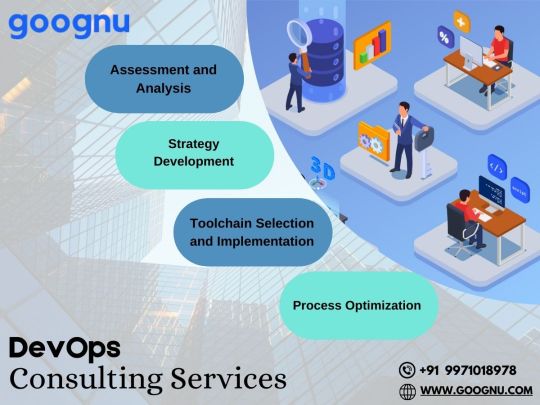
Simplify Software Delivery with Goognu's DevOps Consulting Services
Goognu offers user-friendly DevOps Consulting Services to help businesses simplify their software delivery processes. Our team of experts guides you through the world of DevOps, implementing best practices and leveraging modern tools to enhance collaboration, automate workflows, and speed up time-to-market
#DevOps Consulting#Software Delivery#DevOps Strategy#Process Optimization#devops consulting services
0 notes
Text
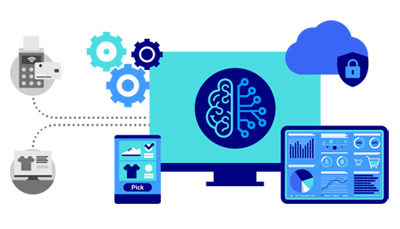
JAMstack, Buddy, and Contentful: A Winning Combination for Scalable and Reliable Websites
The Challenge: We had to build and manage multiple international websites with a small team of 5, while ensuring scalability with the localisation at its core, reliability with easy content and code changes, and efficiency with minimal operational overhead.
The business ambition was to launch 10 new websites within the first year with a limited budget and no additional team members. Our project plan was to use the central development team to build the core components, own the technical operation of the websites, and train the local teams who would content-manage their own localised websites.
Our future vision was to empower local teams to expand their websites with local components, so the central solution had to be a modular and scalable by nature.
The Solution: JAMstack, a web development architecture that uses JavaScript, APIs, and Markup to create fast, secure, and scalable websites and applications. JAMstack allowed us to build a headless website that was decoupled from its back-end, so that it could be served directly from a CDN (Content Delivery Network). This architecture reduced the need for dynamic servers and databases, and improved reliability and scalability which in return helped us to keep operational and maintenance costs much lower than traditonal websites.
We chose Contentful as our headless CMS, as it fit the picture perfectly with its RESTful APIs and easy to handle JSON files. Contentful gave us the flexibility and control to manage our content across different regions and languages, and to integrate with various services and features from third-party providers via APIs.
We used Gatsby and React to build the front-end that was managed through GitHub. Gatsby and React are powerful frameworks that enable us to create dynamic and interactive web pages with high performance and SEO which were crucial for the project as these were brand websites with keen focus on the design and findability. GitHub was our version control system that helped us to collaborate and track changes in our code.
We used Buddy, the DevOps automation platform, to build the CI/CD pipelines that automated our workflows and integrated with our tools. Buddy has a visual pipeline editor and a dashboard that show us the status and performance of our projects, and allow us to manage our settings.
The trick: was to leverage MACH architecture, starting with Headless. MACH stands for Microservices, API-first, Cloud-native, and Headless, and it is a modern approach to software development that helps us to build a scalable, modular, and composable architecture. MACH architecture gives us the freedom and flexibility to choose the best tools and services for our needs, and enable us to adapt to market changes.
With the help of these technologies and tools, we were able to automate a big portion of the operation, ensuring that the team could manage the ambitious scale. By using the same infrastructure and codebase for every single website, we could avoid duplication, inconsistency, and maintenance issues. We also achieved faster delivery, better quality, and higher customer satisfaction.
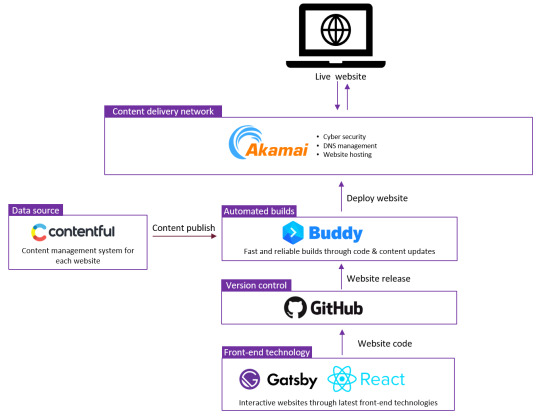
#MACH#JAMstack#contentful#Buddy#headless#cloud-native#website#international#leadership#software delivery
0 notes
Text
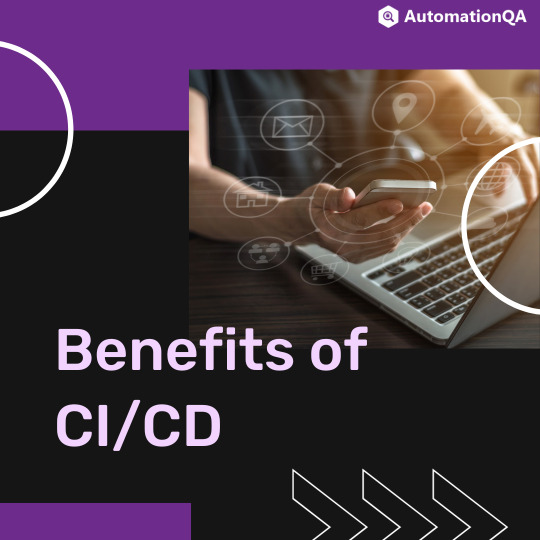

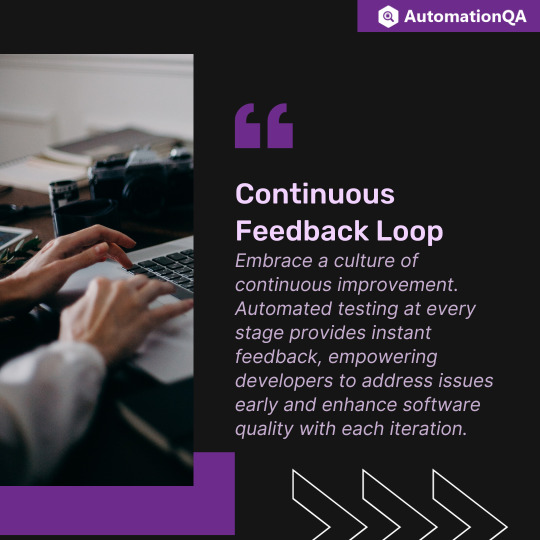
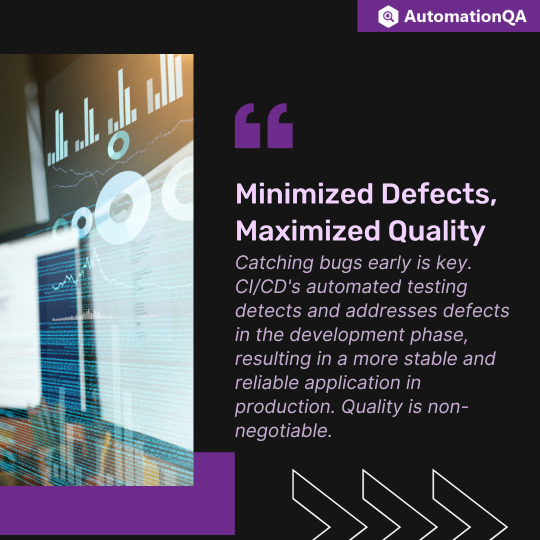
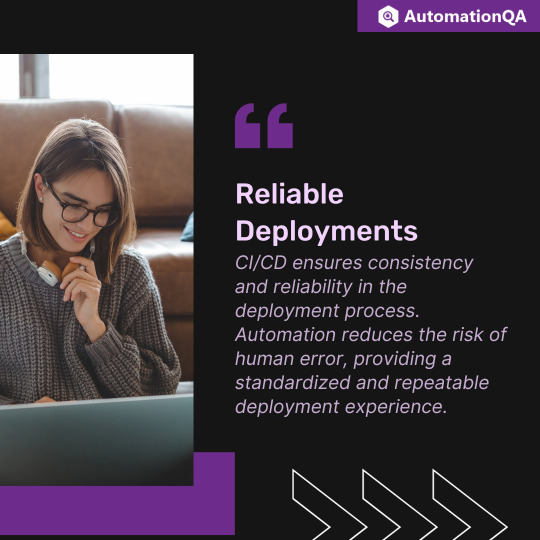
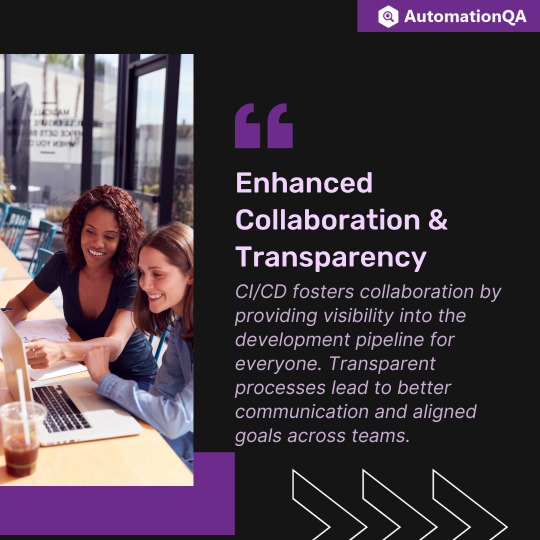
Unlocking the power of continuous innovation! 🚀 Embrace the Benefits of CI/CD for faster development cycles, improved collaboration, and seamless deployment.
💻⚙️ Elevate your software delivery game with efficiency and precision.
#power#innovation#benefits#cicd#development#collaboration#deployment#software delivery#efficiency#precision
0 notes
Text
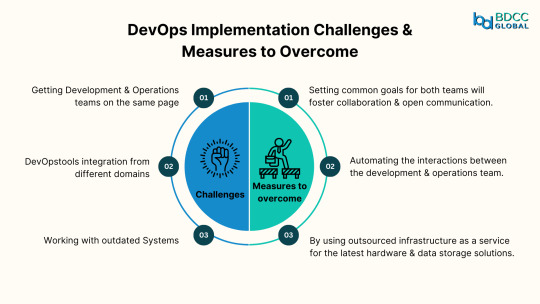
Navigating DevOps Challenges: Learn how to conquer implementation hurdles and succeed in your journey towards seamless software delivery. 🚀
1 note
·
View note
Text
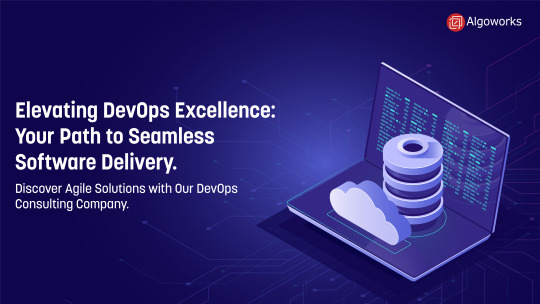
Are you looking to take your DevOps game to the next level? Look no further than Algoworks! Our team of experienced DevOps professionals has the skills and expertise to help you achieve seamless software delivery services in no time.
Soar to New Heights with Algoworks: Your Journey to Effortless Software Delivery Services! 🚀🌐
1 note
·
View note
Text

Steps to Building AI in QA
Pilot
Data annotation
Testing and validation
Scaled deployment to production
Retraining
#technology#digital transformation#tech#it consulting#software development#product development service#technology trends#ai#qa#quality assurance#quality testing#software delivery#software developers
0 notes
Text
0 notes
Text
Floor 212: FLAVOR FOLEY
this is how it should be!
I WILL TALK ABOUT THIS
I know these are supposed to be doodles but I really got possessed
I saw @debble-from-deltarun s post earlier today and I WAS LITERALLY THINKING ABOUT IT ALL DAY (sorry for the tag but I WANT PEOPLE TO SEE IT)
I had this specific way I wanted to draw poob for this, and while the notes get a bit lost in the end, I think think they're cute!

I do most of the doodles on this blog in mspaint which... really didn't help with this
so heres all the files I used! cause I think that's interesting :]c
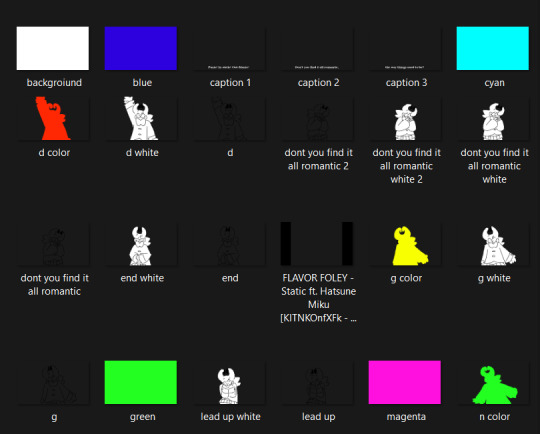

I may have taken quite a bit of time to get the final video... so many times

ALSO IF YOU SAW THIS POSTED EARLY NO YOU DIDNT
#regret-delivery#mod melon 🍈#regretevator poob#static flavor foley#hatsune miku#yeah i use clipchamp to make videos. i dont know any other software
71 notes
·
View notes
Text

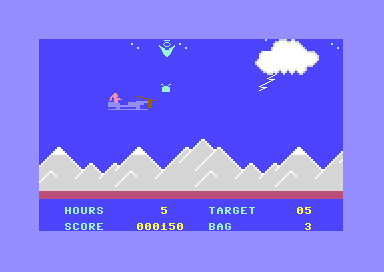
Special Delivery: Santa’s Christmas Chaos (C64)
Developed/Published by: Dalali Software / Creative Sparks (Thorn EMI Computer Software) Released: 1984 Completed: 05/12/2024 Completion: Got a high score of 8750. I’ll take it!
Writing about old video games for an audience of very few could seem like a thankless task–especially when they’re as awful as Christmas Crackers. But there’s a reason I do it. One, I just love playing games, even if they’re so crap I give up on them in minutes. Two, I just love learning. I love discovery, I love finding out things that are new to me about video games and their history. And sometimes, if I’m lucky, I find out some things that no one has really paid attention to before.
I never thought playing a completely random Christmas cash-in on C64 would bring me anything like that.
Special Delivery: Santa’s Christmas Chaos is a game for C64, Spectrum and Atari 8-Bit released by Dalali Software under Thorn EMI’s “Creative Sparks” imprint. At the time it sank without trace due to, apparently, a lack of marketing. After playing it–and I will get into that–I did my usual investigation into the developer, and was quite prepared to dismiss Dalali as one of the many fly-by-night British game developers of the 1980s–they appeared to be only a going concern between 1984 and 1989 and didn’t have any particularly notable games to their name. They were responsible for ports of Rescue On Fractalus and Lilttle Computer People to Amstrad CPC, but largely seem to have had the bad luck of being most related to 1986’s Biggles game. The weirdest thing about that is that not only did I really like the movie on which it was based (which I’m sure no one else remembers but me) when I was a kid, watching it on telly several times, I’ve actually played the game! It was on Amstrad Action #68’s covertape (along with How To Be A Complete Bastard!) and, as vague as my memories of it are now, I’m sure I played it loads of times. Less than How To Be A Complete Bastard, admittedly.
This led me to dig a little further, and sometimes things just fall into place, because I found an astonishingly in-depth article from Sham Mountebank’s When Were They Now? blog (a new one to me) all about Dalali. I think Mountebank slightly buries the lede however, because digging into the linked articles it seems absolutely remarkable that Dalali is not only in the ranks of the earliest companies to have been founded (or co-founded) by a woman, but very likely the first game company founded by a Palestinian: Hanan Samara.

Hanan Samara, pictured in Computer & Video Games March 1985.
Game companies had been co-founded by women before–most famously Sierra, by Roberta Williams and her husband Ken in 1979–but I think Samara’s story might be unique. According to an interview with ANTIC The Atari 8-bit Podcast she believes she might have been the first female assembly programmer in the UK, starting out by converting software to work for the Arabic market. Moving to work for Thorn EMI, she’d see a Humpty Dumpty puzzle game–programmed by her future husband(!) Chris James–and be “hooked.”
After coding Jumbo Jet Pilot for Atari 8-Bit for Thorn EMI, it seems that she made the leap to founding Dalali–named for her mother’s maiden name (as her mother said go for it, while her dad said to get a job at IBM...) with another ex-employee, Adrian Wadley.
Something I really appreciate about Samara’s story is that she immediately brought herself to game design, with Dalali’s first game “Jinn Genie”. While this kind of Arabic-theming undoubtedly seems stereotypical today, in an interview with Popular Computing Weekly it is clear that this is an early example of someone trying to represent their culture via the art of video games:
“Jinn Genie is a game that incorporates many of the basic myths and children’s stories of my culture–I am an Arab, a Palestinian, and all the ideas of genies and so on are familiar to me.”

Jinn Genie, on C64.
The most disappointing thing, to me, is that Samara is, at this point, unheralded outside of a blog post, one short podcast, and about… three short articles featuring three pictures that can be found on archive.org! She’s one of the UK’s earliest female programmers, game designers and founders, perhaps the first Palestinian game developer, and she has managed to run Dalali since 1984 because it’s still going–they just stopped making games.
Samara’s story isn’t mine to tell, so I hope that institutions like GDC, The Video Game History Foundation or The Strong can find out more and champion her. Figures such as Muriel Tramis have gone from overlooked to winning the Legion of Honour, and if I can help get the word out about Hanan Samara, just a little bit, I’ll feel I’ve done my part.
But I know what you’re asking now.
“But how good is Special Delivery: Santa’s Christmas Chaos???”
So let's return to regular programming. First, I’m going to note that I believe I have played the wrong version of this. When it came to games, Samara was an Atari 8-bit coder, and it is absolutely transparent that Special Delivery is based entirely on Jinn Genie–both feature a flying section, a climbing section, and a section with floors and ladders. It does feel like I should have played the Atari 8-bit version to experience the most representative version, as I did with playing the C64 version of Pirates, let’s say.
(It’s worth mentioning here also that the ANTIC podcast–recorded seven years ago now–even notes that the version of Jinn Genie that Samara coded, for the Atari 8-bit, seems to be lost, although Samara does say that she has a copy of it somewhere. Aforementioned institutions could probably help with that too. What that largely means, though, is that the Atari 8-bit version of Special Delivery is the closest you can get to playing the original Jinn Genie.)
To be fair, the C64 version seems pretty close to the original (the ZX Spectrum port is… not).
As I’ve said previously, my expectations for a Chrimbo cash-in have been low, and no matter how much this is sort of a reskin of a previous game, that it’s got an idea and an actual design exceeds anything I’ve expected. At first glance you might go “well, isn’t this just Santa Claus again?” (or even Santa’s Sleigh Ride.) But it’s honestly much more–even if it is still a bit weird.
In Special Delivery, you’re first flying across the screen in Santa’s (somewhat confusingly drawn) sleigh, collecting presents that… angels are dropping. Which implies that this is in fact the historical Saint Nicolas, or maybe I’m just overthinking it. You’re trying to collect a target number of presents, but you lose them if you crash into clouds (odd) or accidentally collect a demonic present dropped by a devil (who appear rarely, but look very much like angels, annoyingly.) Losing presents won’t kill you, but Santa has a set amount of hours in the night, and you lose an hour if you get struck by the lightning that occasionally appears from the strangely firm clouds.

If you collect enough presents, you get to land on a big house to put presents under the tree. First this requires you climb down the chimney, which in this situation is: huge, full of ladders, and lit so flames keep climbing the ladders that you have to dodge. Once you’ve done that, you’re actually in the house, where you have to Solid Snake your way to the tree, drop off the present, grab the front door key, and then leave through the front door, while the residents run wildly from one room to the next, seemingly out of their nut with either excitement for Christmas or hatred for Santa. Get hit by a flame or grabbed by a resident and you’ll lose an hour.

Interestingly, if you don’t collect enough presents, you don’t get to go into any big houses, but you do get to drop presents down the chimney of some wee houses. You only really pick up big points for going into big houses, which raises the concerning idea that Santa only gives a fuck about you if you’re rich enough to live in a big house.
But to be fair, the people in big houses seem absolutely determined to not get pressies, keeping their fires roaring and attacking Santa on sight, so perhaps he just likes the challenge. “I hope Santa doesn’t show up” they’re saying, “we’ve got all the stuff we need in this big house. We don’t need wooden toys or whatever the historic Saint Nick would be handing out, he should give those to the poor people in the wee houses.”
More fool them, I checked Wikipedia and he was dropping off bags of gold coins through people’s windows. (Admittedly to stop them being sold into prostitution.)
Anyway. Even before I knew the exciting context for Special Delivery, I was struck by how… weirdly ok it was! Maybe it’s just how bad the other Santa-em-ups have been (well, I guess I didn’t hate Merry Xmas Santa) but the different sections largely make sense together, undoubtedly because it’s based on Jinn Genie. The main problem really is that it just doesn’t control very well. Flying the sleigh is stiff, and when you’re actually controlling Santa himself, he reacts very slowly to your input, meaning you have to time presses based on the lag, and I probably lost most of my lives in the chimneys as a result–it might be better on the Atari 8-Bit, so more fool me.
Special Delivery is not really the kind of thing that’s going to hold your attention for very long, but it does actually manage to be playable and feels properly festive. I’ll celebrate that.
Will I ever play it again? I was surprised to see a non-zero number of people say online that playing this is a bit of a Christmas tradition. Well, I don’t think I will be taking it up, but I do fancy playing Jinn Genie at some point now--maybe once that Atari 8-bit version is found!
Final Thought: In my research I was surprised to discover not only had I played a Dalai Software game before, I’d also played a Creative Sparks game, similarly loads of times: Danger Mouse In Double Trouble. Strangely, it has the same multi-game design as this (and I guess, a lot of the computer games of the era) but suffered a lot more for them not having any meaningful connection and mostly being rubbish. Even as a child I remember enjoying just the jungle level and suffering through the rest to get through that. The things you’ll do when you’ve got nothing else as a child.
Every Game I’ve Finished 14>24 is OUT NOW! You can pick it up in paperback, kindle, or epub/pdf. You can also support Every Game I’ve Finished on ko-fi! You can pick up digital copies of exp., a zine featuring all-exclusive writing at my shop, or join as a supporter at just $1 a month and get articles like this a week early.
#gaming#video games#txt#games#text#review#dalali software#c64#hanan samara#palestinian#retro games#retro gaming#special delivery: santa's christmas chaos#creative sparks#thorn emi
92 notes
·
View notes
Text
hey galemancers I found a truly horrible "how are you feeling?" answer in act 2

Tav: How are you feeling? Gale: Oh, you know. Filled with the bottomless dread that can only come from your own impending and self-inflicted death. Gale: Glad to have met you though. At least I'm going out on a high.
#gale dekarios#gale of waterdeep#requires specific dialogue choices in both the encounter with elminster and in the romance scene#one day I'll figure out recording software but for now you should know that the delivery is Lighthearted and Fun and therefore Awful
81 notes
·
View notes